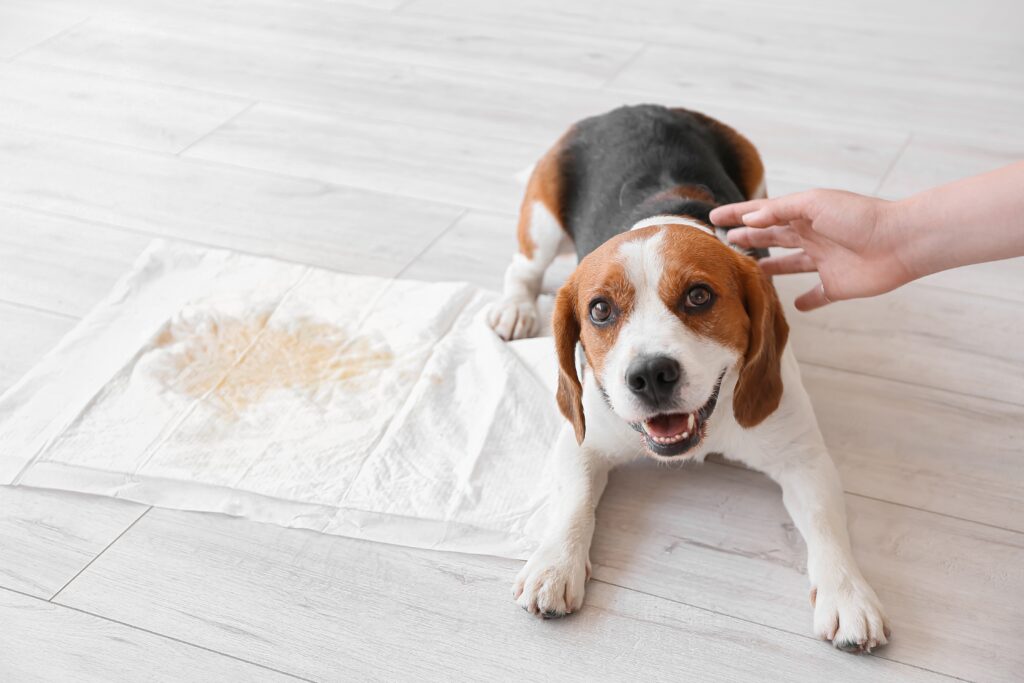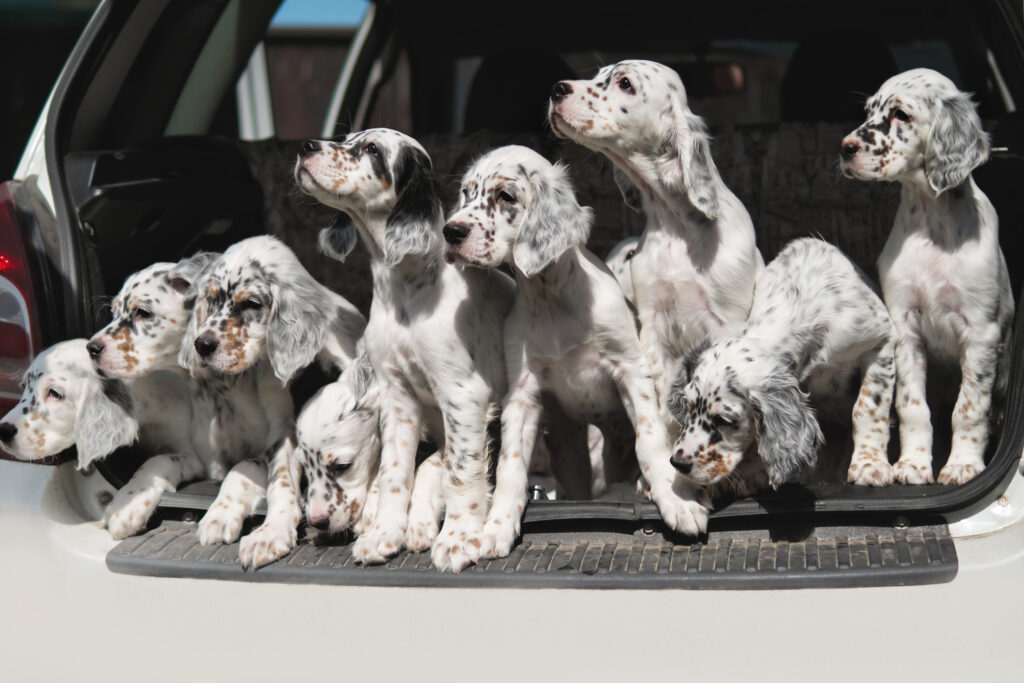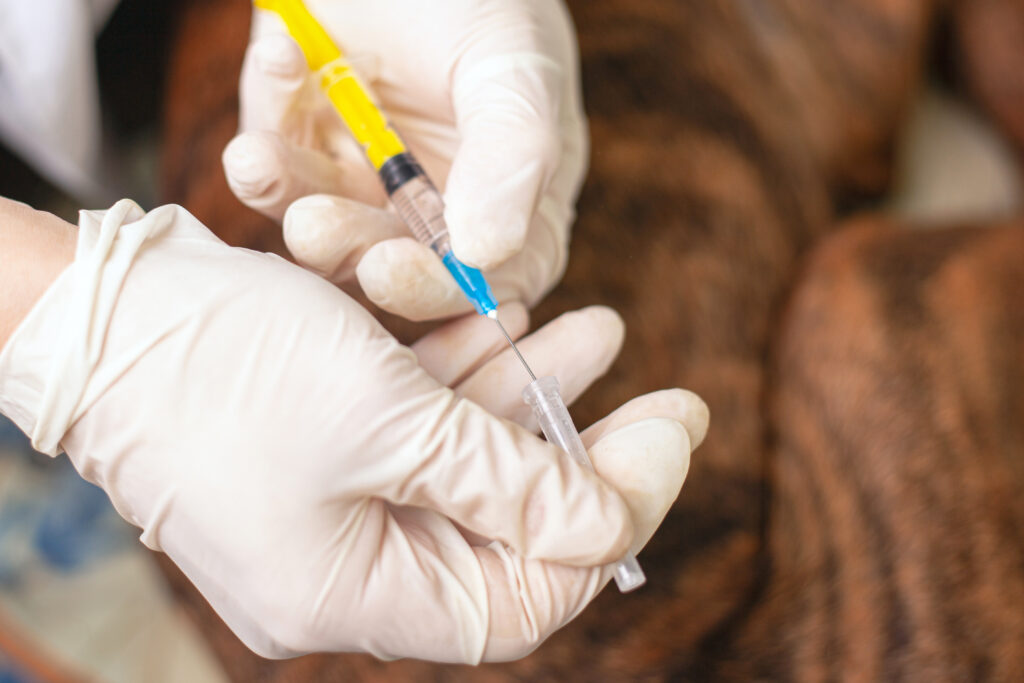Encouraging a puppy to use a pee pad can be helpful, especially in situations where going outside isn’t immediately possible, like in apartments or during bad weather.
Here are some effective ways to get your puppy to use a pee pad…
Choose the Right Location
- Place the pee pad in a consistent spot – Choose a quiet, low-traffic area in your home where your puppy can focus. Puppies thrive on routine, so keeping the pad in the same place helps them understand where to go.
- Avoid placing the pad near their food and water – Dogs don’t like to potty near where they eat, so keep the pee pad away from their feeding area.
Introduce the Pee Pad Slowly
- Show them the pad – When you first introduce the pee pad, gently lead your puppy to it and let them sniff around. Encourage them to explore the pad without pressuring them.
- Use positive reinforcement – When your puppy shows interest in the pad (sniffing or walking on it), praise them and offer a treat. Positive reinforcement helps them associate the pad with something rewarding.
Make the Pad More Appealing
- Use attractant sprays – There are puppy potty attractant sprays available that contain scents designed to encourage puppies to use pee pads. Spraying a little on the pad can help grab your puppy’s attention.
- Place a piece of your puppy’s bedding or a small amount of their urine on the pad – The familiar scent can encourage them to use the pad, as dogs are more likely to go where they’ve marked before.
Supervise and Guide Them
- Supervise your puppy – Keep a close eye on your puppy to catch them when they start showing signs of needing to potty (sniffing, circling, whining). Immediately take them to the pee pad to encourage the behavior.
- Use a command – When your puppy starts to go potty on the pad, you can introduce a verbal cue like “Go potty” or “Do your business.” Say the command calmly while they’re using the pad to help them make the connection.
Reward and Praise Immediately
- As soon as your puppy uses the pee pad, offer enthusiastic praise and give them a treat. The reward helps them connect the action of using the pad with something positive.
- If they don’t use the pad, don’t scold them. Instead, clean up the mess quietly and try again when you see the signs that they need to potty.
Maintain a Regular Potty Schedule
- Take your puppy to the pad regularly—puppies need to go potty often. Take them to the pee pad after meals, naps, playtime, and every 2–3 hours.
- Set a routine – Consistency helps your puppy understand when and where they need to go. Over time, they will learn to wait for their scheduled potty breaks.
Gradually Transition to Outside (If Desired)
- If you plan to transition your puppy to pottying outside, start by moving the pee pad closer to the door after they’ve been using it consistently. Eventually, you can take the pad outside and place it on the ground to encourage them to go potty outside.
- This gradual transition will help them associate potty time with going outside rather than indoors.
Avoid Confusion
- If your goal is for the puppy to use the pee pad, limit their access to other places they might consider appropriate for pottying. This will prevent them from choosing random spots in your home.
- If you use pee pads, avoid pottying in multiple areas, as it can confuse your puppy about where it’s acceptable to go.
Be Patient
- Potty training takes time. Some puppies may learn quickly, while others might take longer. Patience and consistency are key. If your puppy has accidents, don’t punish them. Simply clean up the mess and keep practicing.
To encourage your puppy to use a pee pad, place it in a quiet, consistent spot, use attractant sprays or familiar scents, and supervise them closely during potty times. Reward them immediately when they use the pad and establish a regular potty schedule. With consistency and patience, your puppy will begin to understand that the pee pad is the designated spot for pottying. If you plan to transition them outside later, move the pad closer to the door and eventually outside.


